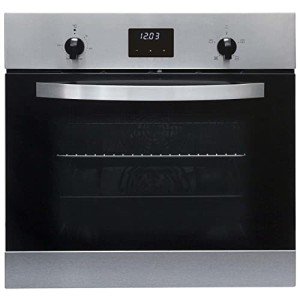20 Things You Need To Know About Oven And Hob
Understanding Ovens and Hobs: A Comprehensive Guide
When it comes to cooking devices, ovens and hobs are amongst the most important tools found in modern-day kitchen areas. They play pivotal roles in meal preparation, transforming raw ingredients into tasty meals. Comprehending the distinctions between different types of ovens and hobs and how to pick the right one can make a significant distinction in cooking effectiveness and food quality.
This article checks out ovens and hobs in detail, supplying insights into their types, features, advantages, and common FAQs. Whether you are an experienced chef or a novice cook, this info will assist you make notified choices for your cooking requirements.
Types of Ovens
Ovens come in numerous types, each created for specific cooking approaches and designs. Here is an in-depth take a look at the most typical kinds of ovens:
Type of Oven
Description
Best For
Standard Oven
Makes use of heating elements located at the top and bottom for even cooking.
Baking, roasting, and general cooking
Stove
Functions a fan that flows hot air for quick and even cooking.
Baking pastries and cookies, roasting meats
Steam Oven
Uses steam to prepare food, maintaining moisture and nutrients.
Vegetables and fish
Microwave Oven
Quickly cooks food using microwave radiation.
Reheating and fast meals
Wall Oven
Built directly into the wall for space-saving cooking options.
Little kitchens and modern-day styles
Ability Level
Supplies multiple cooking modes including baking, broiling, and toasting.
Versatile cooking needs
Types of Hobs
Hobs, likewise referred to as cooktops, can be found in different types based on their fuel source and design. Understanding these alternatives can assist in discovering the ideal fit for your kitchen setup:
Type of Hob
Description
Best For
Gas Hob
Utilizes gas flames for cooking, supplying immediate heat control.
Standard cooking methods
Electric Hob
Uses electric coils or induction aspects to heat pots and pans.
Even heat circulation
Induction Hob
Utilizes electro-magnetic energy to directly warm pots, offering quick and effective cooking.
Energy-efficient cooking
Solid Plate Hob
A type of electric hob with solid plates that takes some time to warm up however keeps heat well.
Sluggish cooking
Ceramic Hob
Features a glass-ceramic surface area enabling simple cleaning, with electric heating aspects below.
Visual appeal
Aspects to Consider When Choosing an Oven and Hob
Picking the best oven and hob combination requires cautious factor to consider of several elements. Below is a list of vital elements to remember:
Cooking Style
- Are you an everyday cook or an occasional baker?
- Do you prefer steaming or frying?
Kitchen Size
- What space is available in your kitchen for the appliances?
- Will you need built-in or freestanding designs?
Fuel Source
- Do you have access to gas, or would you prefer electric?
- Are you interested in induction cooking innovation?
Budget
- What is your budget for buying an oven and hob?
- Are you considering a high-end design or a more budget-friendly choice?
Energy Efficiency
- Are you aiming to minimize your energy usage?
- Do you choose appliances that include high-efficiency ratings?
Advantages of Ovens and Hobs
Both ovens and hobs bring special advantages to the kitchen. Here's a summary of some benefits:
Ovens:
- Versatility: Able to handle a large range of cooking approaches from baking to roasting and broiling.
- Consistent Results: Even heat circulation provides dependable cooking results.
- Large Capacity: Ideal for large meals and batch cooking.
Hobs:
- Control: Gas hobs provide instantaneous heat changes, helpful for exact cooking.
- Effectiveness: Induction hobs are understood for their quicker heat-up times and energy effectiveness.
- Independent Cooking: Multiple hobs enable cooking a number of meals at the same time.
Picking the ideal ovens and hobs is vital for anyone looking to boost their cooking skills and kitchen efficiency. By comprehending click the following internet page of each device, together with their benefits and features, consumers can make educated choices that accommodate their culinary practices and choices.
As cooking areas develop, so do the technologies surrounding cooking devices. Investing in the ideal combination of an oven and hob can lead to much better cooking experiences, greater food quality, and even pleasurable time invested in the kitchen.
Often Asked Questions (FAQs)
What is the difference between convection and traditional ovens?
- A convection oven uses a fan to circulate air for even cooking, while a standard oven relies only on leading and bottom heating components.
How do induction hobs work?
- Induction hobs utilize electromagnetic fields to directly warm pots and pans made of magnetic materials, causing quicker cooking times and more energy performance.
Are gas hobs safer than electric hobs?
- Security depends on use and installation. Gas hobs require proper ventilation and can present a fire risk, while electric hobs may position dangers of burns due to their hot surface areas.
Can I bake in a steam oven?
- Yes, a steam oven can be utilized for baking, frequently leading to moister and fluffier baked products, especially breads and pastries.
What should I try to find in a built-in oven?
- Search for functions like capacity, cooking modes, energy performance ratings, and ease of cleaning.
By considering the info and guides offered in this short article, readers can quickly navigate the world of ovens and hobs, making sure that they pick the best devices to suit their cooking needs.
